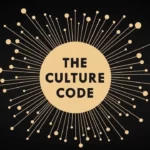Internal communication as a carrier of culture – Examples of implementation
- Szymon Konieczny
- culture, implementation, internal communication
- 0 Comments
I invite you to the second part of the articles on work culture and internal communication. As promised, today we will look at examples from implementations in this area in larger companies.
Thanks to technology, we are currently working in a golden age of communication capabilities. We can not worry about geographic distances or time zones. We can work from anywhere in the world and create content with whomever and however we want. Yet, regardless of our position, we often don’t know the answers to fundamental questions; Questions that affect our own backyard, our departments, our supervisors, our employees.
What do others do in this company? What is my and their contribution to the company’s goals? Who are they actually? Who do I work for? Who is working for me? What is our purpose and our values?
This post… will not answer these questions. But it can point the way to the answers to them. Because the place where the answers begin is where other people’s knowledge ends. And to bring it all together, you need communication. Internal communication.
So enough of an introduction, let’s look at some examples of how the best do it:
Vodafone
Vodafone is one of the largest international mobile operators from the UK. In 2017, they released a mobile app designed for their more than 100,000 employees. It was also a moment of dramatic change for the company. They removed old channels to bet on a new, more authentic style of communication.
Why? First and foremost, they wanted to improve the quality of their communications. As Erica Lockhart, head of internal communications, says:
“You can have the best content, but if you have to use a clumsy intranet and photos or videos are uploaded in poor quality – it will never look professional. For a communications person, operating with such a tool is definitely not an inspiring way to work.“
So they found a developer to create an app for them. They wanted it to look similar to the BBC News app. The company they found already had experience in such implementations, and as a result they had a lot of data regarding the best actions and optimizations.
At first they launched it for only 200 managers, then for 2,000 users. They promoted the application for 6 months, until at one point they completely shut down access to the intranet, desktop alerts or email newsletters. They wanted to prevent people from using outdated systems.
In their own words, the application has been received very positively. Within a year, 85,000 employees registered with it and 70% of them use it regularly every month.
And how do they use the app? As Erica herself says, there’s no point in writing something that no one wants to read. So in addition to changing the software, they also changed their writing style. They’ve moved away from a formal, corporate tone and started writing about people and what’s happening in the workplace.
Currently, their content is 20% inspiring employee stories, 50% is about the company’s goals and changes and 30% is fun, enjoyable attention-grabbing stuff. The texts are longer, but more emotionally actionable. The content is rich in good quality photos and gifs.
And what if you need to touch on some content that simply can’t be described in an interesting way? Well, for that they have a special channel – Boring but important 🙂
Scottish Water
Scottish Water is an organization that deals, as the name suggests, with the provision of water in Scotland. Between 2016 and 2018 they carried out the implementation of a new type of communication channels. What’s more, they gained several awards and publicity for the way they did it. Ruth Findlay, manager of the internal communications department, shared in an interview the ways they used during it:
First and foremost – knowledge. And not the kind from books, on the contrary – the kind from employees, from experience. They collected feedback from hundreds of employees through phone and online surveys or through focus groups. They also made comparisons with other organizations and tried to draw inspiration from the best.
As a result, they concluded that they wanted to take advantage of mobile capabilities. They created a new intranet from scratch, which was designed using mobile-first technology. So instead of the usual intranet structure, the result was a system incorporating blogs, vlogs, animations, videos, gifs, team pages or full adaptation of external systems (such as SharePoint).
In their communication strategy, they have extracted several key missions – to include, engage and encourage employees:
- Inclusion is nothing more than providing employees with information about their work. It also consists of showing how their role contributes to the success of the company as a whole.
- Engaging involves establishing an emotional and rational contract with the community. This is done by people giving their input inside the intranet and adding their contribution. It can be one’s own opinion, criticism, a tip, a mentioned favorite element of the company. Anything that builds our sense of self within the company.
- Encouragement is providing a sense of action in the community. A sense of being supported, safe and heard.
The company went so far with this that they decided to treat their intranet like a mascot and named it Scotty. Then came the first visuals of Scotty in the form of a small dog. Well, somehow it worked out that Scotty was liked by everyone and became the company’s mascot by the way. He appeared on T-shirts, opsaks, in video clips and so on.

It also became the inspiration for the “Dogs of Scottish Water” channel, where employee-dog owners shared photos of their pets. It was one of many similar channels. Indeed, it suddenly became apparent that people wanted to be involved in the community if there was room for things outside of work.
Cisco
The Cisco example is a little less “electronic-implementation”, but I mention it because it illustrates well the essence of an ideal communication process.
Cisco, a US company, conducts meetings once a month with its employees in various branches. Actually, these are more of a kind of possessives, meant to integrate the team. Since people of different nationalities attend the meetings, employees then have the opportunity to bring ideas from their own culture to the discussion: both work culture and everyday life culture. Afterwards, employees fill out a questionnaire in the internal communication system. It includes questions such as, Do I think my work is important to customers? or What would I communicate to leaders if I were here?

The answers are then analyzed by artificial intelligence. The topics covered are listed, along with words to indicate employees’ attitudes toward them (positive or negative). This, in turn, helps build a database through which decisions are made within the company.
Lisa Atherfold, Senior Director of Communications at Cisco, says that such data collection allows you to be “in tune” with your employees (resonate with them? Broadcast on the same wavelength? :)) For her, this term means more than being a good listener. It’s using data to know what really matters to employees, to take into account and even dictate changes in the company.
SEAT
María Antonia Fontiverio García-Izquierdo, leader of the internal communications team at SEAT says:
“Fundamentally, our company wants to be the kind of company that employees talk about with pride.“
That’s a big challenge, given that SEAT has a lot of demanding goals. They have a Strategy 2025 plan, expanding the range of markets they operate in and continually hiring new employees for those markets.
The company has software developers, designers, office, logistics and production workers. Generation Z, Millenials and people with 40 years of experience at SEAT work there. Various channels are being created for all of them, through which the company is trying to reach them.
So, for example, the company has the SEAT hoy newsletter, which describes the company’s most important news. There are communication stations mounted near production lines, whose role is to provide information about production and how it is organized. There is also mundoSEAT, a color magazine that has been in existence for more than 50 years. It describes stories and interviews with workers. It is available physically as well as inside the app of the same name.

The app has been downloadable since 2015 from the play store and Appstore, although today under a different name – OneTribe. It contains the most important information about the company, its products and work at SEAT. The app is the hub for all other internal communication channels and the rest of the platforms, such as employee systems, payroll and benefits. The app is constantly evolving, and there are also plans to add secured employee documents soon
If we add direct communication with employees and relationship building, such as through leadership meetings, we have a great recipe for creating a textbook company culture. At SEAT, there is one “spokesperson” for every 15 other employees. The company also has special days when an employee can bring his family and tell them exactly what he actually does.
Summary
As Sue Dewhurst and Liam FitzPatrick write in their book “Successful Employee Communications,” from which I took the examples described above:
“Don’t fall into rigid habits, or you’ll be guilty of constantly offering your co-workers the communications equivalent of a hammer, a screwdriver and a funny pointy thing. At the same time, don’t get carried away by the urge to try something just because it’s the latest thing. Channels are just a means to an end.“
So remember to think about the possibilities that today’s science offers us. And not only one related to technology, but also one related to human resource knowledge. In every company there is already a ready-made scheme for ideal internal communication. Our goal is to find it and bring it to light. And the tools, the applications, the intranet? That’s our means to an end.
And if you want to read about our internal communication solution, I invite you to visit http://allabout.mobi

